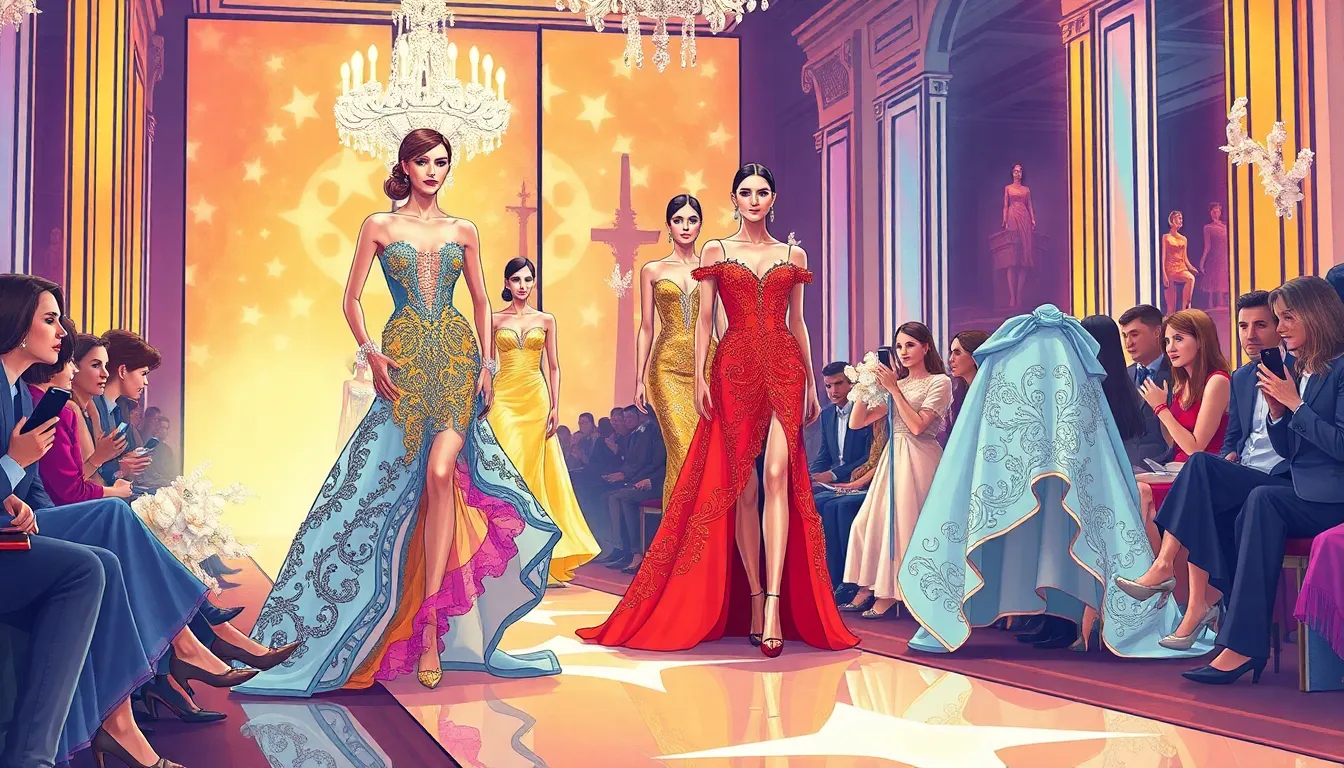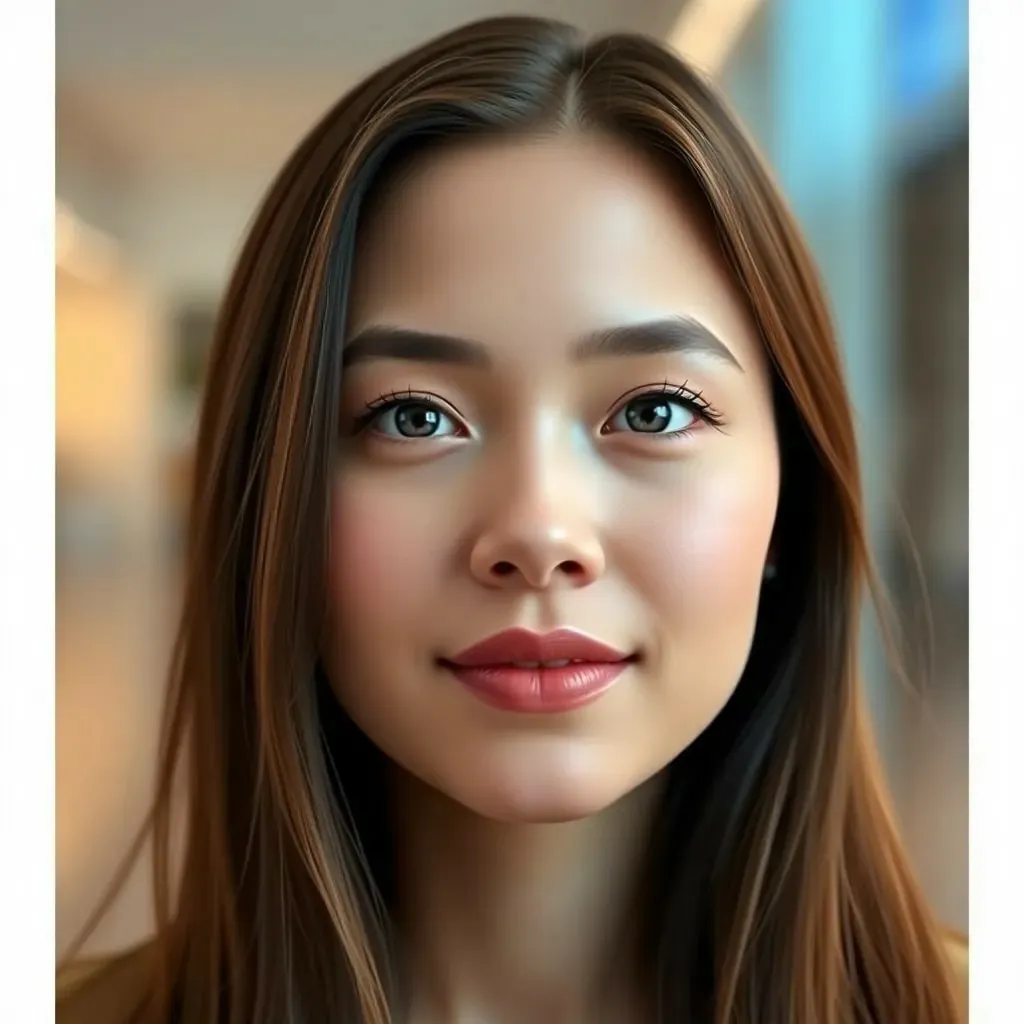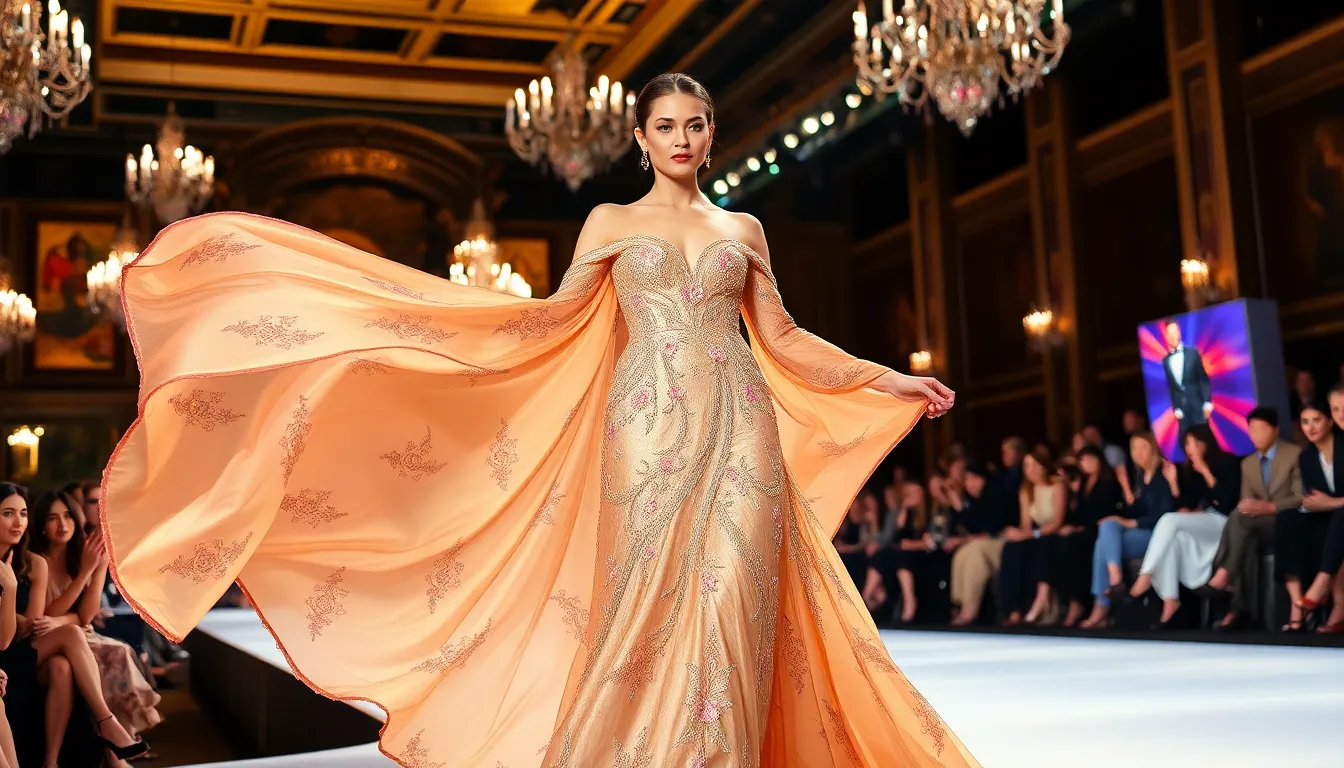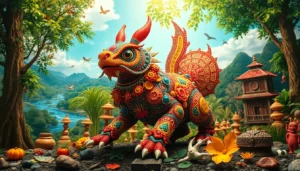Table of Contents
ToggleCouture fashion shows are where dreams strut down the runway in a dazzling display of creativity and craftsmanship. Picture this: models gliding past in breathtaking garments that look like they belong in a museum, but instead, they’re sashaying into the spotlight. It’s not just about fabric and thread; it’s about storytelling, artistry, and the occasional gasp from the audience when a dress takes on a life of its own.
These shows are the Super Bowl of style, where designers pull out all the stops to showcase their wildest visions. From the outrageous to the sublime, couture fashion is a playground for the bold and the beautiful. So grab your front-row seat and prepare for a whirlwind of glamour, because this isn’t just fashion—it’s a spectacle that leaves you wondering if you should start saving for a gown or just stick to your favorite sweatpants.
Overview of Couture Fashion Shows
Couture fashion shows represent the pinnacle of luxury and creativity in the fashion industry. These events showcase custom-fitted clothing created for individual clients, emphasizing exclusive craftsmanship. Designers often present collections that blur the boundaries of fashion, art, and performance, creating immersive experiences for attendees.
Models grace the runway wearing intricate garments adorned with exquisite fabrics and meticulous details. Each piece tells a unique story, reflecting the designer’s vision and artistic expression. Spectators witness dramatic presentations, where movement and music enhance the artistic portrayal of the collection.
Attending a couture fashion show involves more than visual appreciation; it offers an insight into the latest trends and innovative techniques. Fashion houses such as Chanel and Dior consistently set the bar high, pushing the envelope of what fashion can convey. Influencers, celebrities, and industry insiders gather, making these shows a hotspot for networking and inspiration.
High-profile events often take place in extravagant venues, further elevating the experience. Couture shows invite exclusive access, keeping the audience captivated by the allure of unattainable luxury. Individual pieces reveal an unparalleled level of craftsmanship, often involving hundreds of hours of work by skilled artisans.
Collaboration between designers and artisans enhances the quality and uniqueness of each collection. Special techniques, such as hand embroidery and elaborate textile manipulation, highlight the dedication to artistry in couture. These factors combine to create fashion that transcends mere clothing, focusing on transformative experiences that resonate with the audience.
Couture fashion shows continue to signify innovation in the fashion industry, inspiring trends that trickle down to <a href="https://assembledetroit.com/what-is-ready-to-wear-fashion”>ready-to-wear garments. The essence of couture lies in its ability to captivate and provoke thought, making it a vital part of the evolving fashion narrative.
Historical Evolution

Couture fashion shows reflect a rich history marked by transformation and innovation. These events evolved from exclusive gatherings into globally recognized spectacles.
Early Beginnings
The roots of couture fashion trace back to the mid-19th century. Charles Frederick Worth, known as the father of haute couture, established the first fashion house in Paris around 1858. He introduced the concept of presenting seasonal collections, captivating clients with detailed gowns designed specifically for them. This approach laid the groundwork for future designers, emphasizing personalization and luxurious craftsmanship as integral elements of couture.
Modern Developments
Contemporary couture fashion shows emerged in the late 20th century. Designers such as Yves Saint Laurent and Jean Paul Gaultier revolutionized the industry through innovative and daring collections. These shows embraced diverse artistic influences, often blending fashion with performance art, resulting in immersive experiences for attendees. Today, fashion houses prioritize inclusivity and sustainability, reshaping couture to reflect modern societal values while upholding the artistry and tradition established by early pioneers.
Key Characteristics
Couture fashion shows encapsulate the essence of artistry in design and execution. Each aspect highlights luxury, creativity, and the unique nature of high fashion.
Craftsmanship and Tailoring
Craftsmanship distinguishes couture fashion from other segments. Artisans employ techniques like hand embroidery, beadwork, and specialized tailoring to achieve perfection. These skilled hands create garments that fit the body flawlessly. Precision in every stitch reflects dedication to the craft. Couture pieces often take hundreds of hours to complete, showcasing the extraordinary investment in time and skill. Tailoring stands as an art form on its own, with designers adjusting silhouettes to flatter individual body types. Each creation exudes a sense of exclusivity that off-the-rack clothing cannot replicate.
Unique Designs and Fabrics
Unique designs define couture, with each collection presenting one-of-a-kind pieces that tell a story. Designers frequently explore innovative silhouettes and unconventional shapes. Fabrics play a crucial role, with high-quality materials like silk, chiffon, and velvet dominating the runway. Luxurious embellishments elevate the aesthetic of each garment, transforming them into wearable art. Many designers push boundaries using sustainable or experimental textiles, reflecting modern fashion values. Inspiration often stems from cultural motifs, art movements, or historical references, resulting in collections that are not only visually stunning but also conceptually rich. Creativity flourishes through bold colors and intricate patterns, ensuring no two collections are alike.
Notable Couture Houses
Couture fashion houses represent the pinnacle of creativity and luxury in the fashion industry. They create distinctive works that embody artistry and sophistication.
Dior
Dior stands as a hallmark of elegance and innovation. Founded in 1946 by designer Christian Dior, the fashion house quickly gained acclaim for its revolutionary “New Look,” which emphasized femininity through structured silhouettes and luxurious fabrics. The brand’s couture collections often feature intricate embroidery and exquisite detailing, showcasing the artistry behind each garment. Notable runway shows capture the audience with theatrical presentations, further solidifying Dior’s reputation. Modern interpretations by designers like Maria Grazia Chiuri continue to push boundaries while honoring the legacy of couture tradition. Iconic pieces from Dior often make their way into the wardrobes of celebrities, reinforcing the brand’s status in haute couture.
Chanel
Chanel epitomizes timeless fashion and avant-garde thinking. Established by Gabrielle “Coco” Chanel in 1910, the house revolutionized women’s fashion by introducing tailored suits and the little black dress. Signature elements of Chanel couture include impeccable tailoring and classic fabrics like tweed and silk. Each collection emphasizes a blend of elegance and modernity, often reminiscent of Coco’s original vision. Presentations reflect a unique artistic direction, incorporating themes inspired by history and culture. Under the helm of designers like Karl Lagerfeld and now Virginie Viard, Chanel’s dedication to craftsmanship remains paramount, ensuring the brand’s enduring appeal in the realm of couture.
Givenchy
Givenchy is renowned for its fusion of simplicity and sophistication. Founded by Hubert de Givenchy in 1952, the house gained fame for elegant silhouettes that complemented the wearer’s form. The brand’s association with iconic figures like Audrey Hepburn showcases its influence in both fashion and film. Givenchy couture collections often feature clean lines, luxurious fabrics, and precise tailoring, creating a sense of effortless chic. Modern designers continue the legacy by incorporating innovative techniques while staying true to the house’s classic aesthetic. Each collection reflects a commitment to haute couture craftsmanship, ensuring Givenchy remains a staple in luxury fashion.
The Role of Couture Fashion Shows Today
Couture fashion shows hold significant relevance in today’s fashion landscape, serving as powerful platforms for creativity and innovation.
Influence on Mainstream Fashion
Couture fashion shows impact mainstream fashion profoundly. Designers often set trends that filter down to ready-to-wear collections. For instance, specific silhouettes, colors, and embellishments emerge from these high-fashion displays. Many fashion houses showcase their groundbreaking designs, influencing high-street brands. A recent example includes the resurgence of oversized garments from couture runways adopted by retailers. Key elements like textures, styles, and patterns often appear in upcoming seasonal trends. The distinct artistry exhibited in couture also cultivates appreciation among consumers for craftsmanship.
Cultural Significance
Couture fashion shows contribute significantly to cultural conversations. These events often challenge societal norms and highlight diverse artistic voices. Designers frequently address issues such as sustainability and inclusivity, reflecting contemporary values. For instance, couture collections often incorporate cultural motifs and celebrate global influences. Shifts in themes during shows evoke discussions on identity and representation. Additionally, the amalgamation of fashion and art often captivates audiences, encouraging creative expression. Celebrities and influencers attending these events further amplify their cultural relevance, enhancing the connection between fashion and society.
Couture fashion shows remain a vital part of the fashion landscape, showcasing the intersection of art and luxury. These events not only highlight the exceptional craftsmanship and creativity of designers but also serve as cultural touchstones that reflect contemporary values.
As they evolve, couture shows continue to inspire trends and push boundaries, inviting audiences to engage with fashion on a deeper level. The dedication to artistry and innovation ensures that couture will always hold a special place in the hearts of fashion enthusiasts worldwide.




